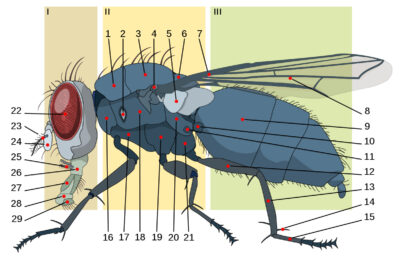Anatomy and Morphology
Anatomy and Morphology are branches of biology that study structure and parts. Ancient concepts of evolution emerged by comparing the anatomy and morphology of different organisms.
Comparative anatomy and morphology remain valuable, measurable parameters for exploring evolution scientifically.
Origins of Anatomy
Anatomy, derived from the Greek term ἀνατομή anatomē meaning “dissection,” is the scientific study of the structure of organisms, including their systems, organs, and tissues.
Greek philosopher Aristotle introduced the systematic study of anatomy. Eventually, his views of nature profoundly shaped the emerging academics of Western civilization, even Charles Darwin.
While Aristotle’s geocentric views of the Solar System were proved wrong by Nicholas Copernicus, his observations continued to influence biology. From Darwin’s inner circle, speaking of Aristotle, anatomist Richard Owen declared –
“Zoological Science sprang from his [Aristotle’s] labours, we may almost say, like Minerva from the Head of Jove, in a state of noble and splendid maturity.”
Origins of Morphology
While anatomy is considered a subdivision of morphology, morphology focuses on broader visual aspects. Interestingly, while morphology appears eleven times in the Origin of Species, anatomy never appears. For Darwin, morphology is –
“The law of form or structure independent of function.”
German scientist Johann Wolfgang von Goethe (1749-1832) developed the field of morphology, followed by German scientist Karl Friedrich Burdach (1776-1847) – the first to use the term “biology.”
Comparative Anatomy and Morphology
The study of similarities and differences between different species is known as homology. These observed similarities are thought to be evidence of common descent – biological evolution. As Darwin explains in the Origin of Species –
“On this same view of descent with modification, most of the great facts in Morphology become intelligible—whether we look to the same pattern displayed by the different species of the same class in their homologous organs, to whatever purpose applied; or to the serial and lateral homologies in each animal and plant.”
However, evidence from the fields of anatomy and morphology to validate the theory of evolution scientifically remains a speculative field of study.
Anatomy and Morphology is a subcategory of Evolution and Science.
More
To understand how evidence in Anatomy and Morphology scientifically challenges the theory of evolution, consider reading the following –
Each article describes how observable evidence scientifically challenges the current understanding of evolution.
Darwin Then and Now is an educational resource on the intersection of evolution and science, highlighting the ongoing challenges to the theory of evolution.
Move On
Explore how to understand twenty-first-century concepts of evolution further using the following links –
-
- The Understanding Evolution category showcases how varying historical study approaches to evolution have led to varying conclusions. Subcategories include –
- Studying Evolution explains how key evolution terms and concepts have changed since the 1958 publication of The Origin of Species.
- What is Science explains Charles Darwin’s approach to science and how modern science approaches can be applied for different investigative purposes.
- Evolution and Science (current category) feature study articles on how scientific evidence influences the current understanding of evolution.
- Theory and Consensus feature articles on the historical timelines of the theory and Natural Selection.
- The Biography of Charles Darwin category showcases relevant aspects of his life.
- The Glossary defines terms used in studying the theory of biological evolution.
- The Understanding Evolution category showcases how varying historical study approaches to evolution have led to varying conclusions. Subcategories include –



